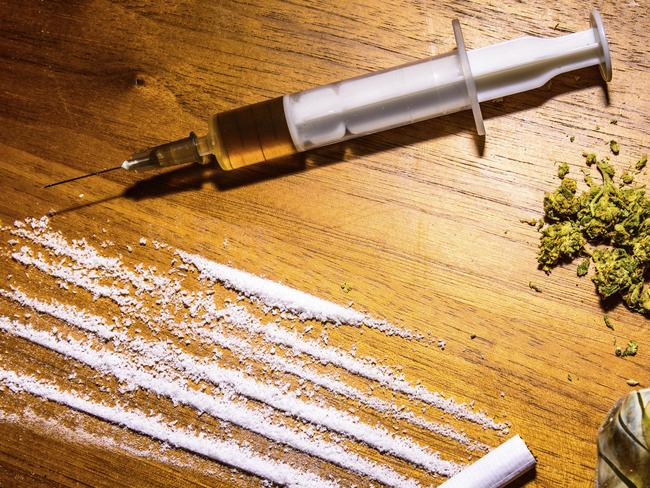Drugs like ice have Australia hooked
WE’VE known for years the effect amphetamines could have on Australia, but experts say we weren’t ready. And now we’re paying the price.

National
Don't miss out on the headlines from National. Followed categories will be added to My News.
AUSTRALIA is in the midst of an ice epidemic, with the drug being linked to a growing number of crimes, and higher quantities of the amphetamine seized at our borders.
And there is no end in sight to our addiction.
Experts say the popularity of the drug caught Australia unawares, with the usage on par with the crack cocaine epidemic in the United States.
In recent months even the Prime Minister has admitted the war on drugs may be unwinnable.
Evidence showing the extent of the problem emerged last week with an Australian Institute of Criminology (AIC) survey showing large numbers of people who had been arrested had amphetamines in their system, with ice being one of the most common varieties.
Even worse the survey showed the drug was of good quality and easy to obtain.
Drug researcher Associate Professor John Fitzgerald told news.com.au that he didn’t think Australia was prepared for the amphetamine epidemic and it was impossible to say when it would end.

Professor Fitzgerald, who is the head of criminology at the University of Melbourne said the tragedy of drugs like amphetamines was they spread easily through the community to beyond areas where “street drug crime” was prevalent.
Regional Victoria was one example.
The previous drug of choice — heroin — did not have as much reach, so in that respect the amphetamine epidemic was unprecedented.
“Except for cannabis it is (the most popular drug) … Cocaine use isn’t as high as amphetamines.”
Police and addiction experts warned of the dangers of amphetamines from the late 1990s but it is possible the country didn’t understand extent of it until it was too late.
“It’s hard to tell where it’s going to go … We weren’t well prepared for this change.”
Drug trends were difficult to predict but Professor Fitzgerald thinks the epidemic is going to be a difficult problem to solve.
“It’s not going to go away quickly.”
However drug trends usually went in waves so it would be over at some point.
The AIC figures revealed how high availability of amphetamines was.

High rates of amphetamine use were detected in police detainees in Kings Cross, Sydney, (61 per cent), East Perth (43 per cent) and Brisbane (41 per cent) with respondents saying the drug was easy to obtain.
Nearly half of all drug offenders tested positive for amphetamine use and nearly a third of violent offenders had it in their system.
The survey has shown increasing use of the drug since 2009.
Jamie Pitts, chief executive of Odyssey House, which offers drug and alcohol programs for addicts, told news.com.au he had heard reports in recent months of a women’s refuge in Sydney being filled with people beaten by partners who were high, or in withdrawal from amphetamines.
“The thing with people who use amphetamines is you can’t communicate with them. They’re off in another world.”
He agrees Australia wasn’t ready for its collision with amphetamines.
“You see drug trends all of the time. But it is now staring us in the face — I don’t think we were really ready.’’

About a third of the people being treated at Odyssey House now suffered from amphetamine addictions, a 10 per cent increase in a year.
Last month the Australian Crime Commission (ACC) released its report into illicit drugs which indicated the number of ice seizures was up more than 300 per cent in one year.
Methamphetamines have been linked with a number of brutal crimes in Australia and the acting chief of the ACC Paul Jevtovic likened it to the crack cocaine epidemic wreaking havoc in the United States.
The report said the long-term use of ice can lead to aggressive and violent behaviour, depression, cardiovascular problems, and kidney failure.
The Australian Federal Police say seizures of amphetamines at the border had increased significantly — and were the highest in a decade — after being buoyed by local drug syndicates trying to source precursor drugs needed to cook methamphetamine.
Originally published as Drugs like ice have Australia hooked


